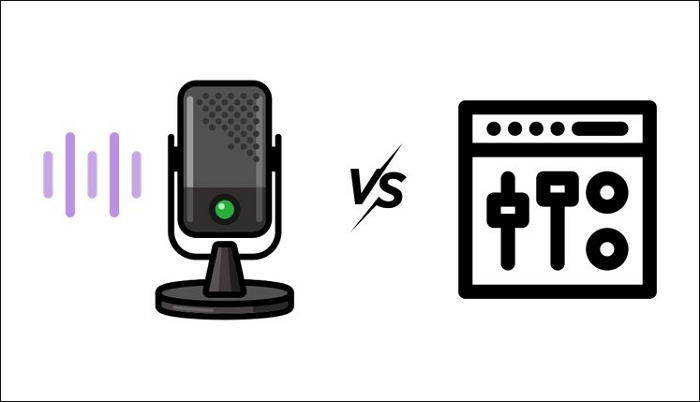- About
- Discover EaseUS
- Reviews & Awards
- License Agreement
- Privacy Policy
- Student Discount
When talking about the audio connections, you may have some confusion about what audio input and output audio are. This article will provide you with detailed information on input vs output audio, from the definition, types, and application scenarios. In addition, you will also learn about the differences between input audio and output audio. Now, let's together explore the world of audio.
What Is Input Audio
A computer or other system receives input audio, which is sound that has been collected by a microphone or other device and supplied to it for processing, recording, or playback. Voice communication, speech recognition, music production, gaming, and many other uses for audio input are possible.

Depending on the kind and caliber of the microphone and the connection to the system, input audio might be analog or digital. The microphone transforms the unprocessed sound wave known as analog audio into an electrical signal. In order to create digital audio, an analog signal must be sampled and converted into binary data that the system can store and modify.
What Is Output Audio
Audio that is produced by speakers, headphones, or other devices and heard by the user or listener is known as audio output. There are several uses for output audio, including communication, education, and entertainment.

Depending on the type, caliber, and connection of the speaker and the system, the audio output can be either analog or digital. The technology transforms binary data into an electrical signal, which the speakers then amplify to create analog audio. An analog signal is converted into digital audio by a speaker or other device after being decoded and processed. To receive and play back wireless sound from the system, a Bluetooth speaker, for instance, employs digital audio.
People Also Read:
Difference Between Input Audio and Output Audio
There are some differences between the two types of audio, input vs output audio, as follows. Now, let's check them together!

Different directions of flow
Input audio flows from the source to the system, while output audio flows from the system to the outside. Your voice, for instance, enters the system as audio input when you talk into a microphone. The sound that emanates from a speaker is audio output from the system.
Different functions and purposes
In terms of functions, audio input can be used to provide information or data for the system, while output aims to transfer information to the audience or users. For example, when you want to know the name of one piece of music, you may use some music apps to identify it. Therefore, the process of knowing the music is that input audio delivers the sound to the system. Instead, when you are listening to music, output audio is responsible for delivering the sound to you.
Different quality and performance requirements
The audio output must be loud and dependable, while the audio input must be precise and clear. For instance, your input audio for a podcast recording must accurately capture your speech without any noise or distortion. When you play a game, the sound effects and music must be reproduced with high fidelity and realistic detail via your output audio.
Conclusion
In a word, this article has talked about input vs output audio. In addition, you may have a better understanding of the differences between input audio and output audio. If you find it helpful, please share it with more friends!
Was This Page Helpful?
Jean is recognized as one of the most professional writers in EaseUS. She has kept improving her writing skills over the past 10 years and helped millions of her readers solve their tech problems on PC, Mac, and iOS devices.
Related Articles
-
Keyframe Interval OBS: The Recommended Setting in OBS Studio
 Jean/2025-01-10
Jean/2025-01-10 -
What Is IMAX Enhanced Movie & How to Watch?
 Jane Zhou/2024-06-06
Jane Zhou/2024-06-06 -
Instagram Video Length Limit: 2025 Ultimate Guide for Posts/Stories/Lives/Reels/Ads
 Jean/2025-01-10
Jean/2025-01-10 -
What Is TikTok Shorts? Is It Better Than YouTube Shorts?
 Jean/2024-11-26
Jean/2024-11-26